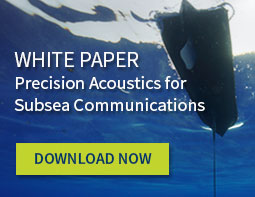Onshore, we have shown that semi-autonomous robots have a place in industrial automation. These robots are present in automated warehouses and are generating buzz in the transportation industry. Offshore it’s a different story. It’s much harder, and much more expensive to instrument and monitor an offshore oilfield. Often, the equipment …Read more
White Paper: Wave Gliders for Offshore Operations
Liquid Robotics — October 4, 2017
What could you do with a robot in the water 24/7? Get extreme current data in real-time, measure seafloor motion with millimeter accuracy, monitor downhole pressure and temperature during well P&A, and more. Today, the offshore energy industry faces tremendous pressure to restructure its base costs. One solution? Using autonomous …Read more
An Admiral’s Perspective: Cost-Effective Monitoring of Australia’s Vast Ocean Territory
Liquid Robotics — September 25, 2017
If we don’t know the ocean, we can’t measure or predict its impact on our landmass and our future prosperity. Australia has 25,000 km of coastline and 10,000 sq. km of marine territory to manage. How do you keep tabs on this vast area? Without spending a lot of money, …Read more
DSEI 2017 Video Highlights
Liquid Robotics — September 21, 2017
We just finished spending a week with 35,000 of our closest colleagues at the world’s largest Defense and Security Conference, DSEI 2017 in London. If you haven’t attended, you could not imagine the entire ExCel Expo Center (over 100,000 square meters) filled with global defense and security companies showing innovative …Read more
The Next Generation Wave Glider
Liquid Robotics — September 7, 2017
Today we announced a new version of the Wave Glider. Here I’ll cover what’s new with this release, and what it means for our customers’ missions. First, a bit of context. Since the Wave Glider SV3 was announced in 2013, we’ve completed hundreds of customer missions. The ocean is an …Read more
GEOMAR: Tracking Seafloor Motion with Wave Gliders
Liquid Robotics — September 6, 2017
Off the coast of northern Chile, where the Nazca plate meets the South American plate, scientists from GEOMAR Helmholtz Centre for Ocean Research Kiel have installed a network of sensors to measure and track seafloor motion. Their goal is to better understand earthquake and tsunami risk in an area where …Read more
